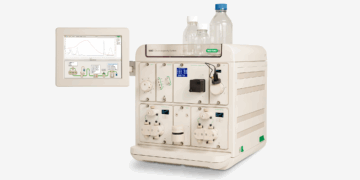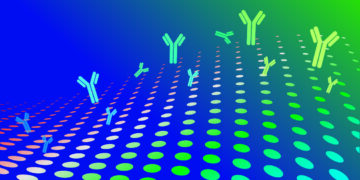
Enhancing the Power of Microsatellite Instability Detection with ddPCR Technology
As the third most prevalent cancer worldwide, colorectal cancer (CRC) is a significant global health burden. Biomarker identification and detection has proven a powerful strategy for improving CRC diagnosis and informing targeted treatment. Microsatellite instability (MSI) is a key biomarker in CRC, and with Droplet Digital PCR (ddPCR), MSI can be accurately detected using a wider range of sample types.

7 Ways Custom PCR Reagents and Plastics Fuel Product Development
One-size-fits-all solutions cannot address the full range of molecular biology needs in areas such as biotech, biopharma, or molecular diagnostics. When your requirements exceed the existing offerings of reagents and plastics on the market, Bio-Rad can partner with you and provide custom solutions. For a deeper look into these customization opportunities, we spoke with Anna Lai, manager of Bio-Rad’s custom reagents program, and Jennifer Placek, who manages the company’s custom plastics.

Sequenced — Comic Series
Join Terence, a motivated undergrad, as he experiences the ups and downs of research using next-generation sequencing, learning valuable tips for successful NGS experiments along the way

Automated Multicolumn Monoclonal Antibody Purification
The current gold standard in monoclonal antibody purification for most researchers is affinity purification with Protein A or G followed by size exclusion chromatography (SEC). Although robust and highly effective, this workflow does have critical pain points and inefficiencies, leaving researchers to feel that they must oversee every step of their workflow, not leaving their chromatography system unattended for more than a few minutes.

Efficacy of a Novel Treatment for Multiple Myeloma Established by Flow Cytometry
Autologous stem cell transplantation (ASCT) is an effective treatment strategy for multiple myeloma (MM) but isolating enough hematopoietic stem and progenitor cells (HSPCs) for transplantation can be challenging. The selective CXCR4 inhibitor motixafortide has been shown to be a safe and efficacious HSPC mobilization agent in a phase 2 trial when paired with G-CSF. Crees et al. (2023) report the results of the phase 3 trial, in which they used the ZE5 Cell Analyzer to explore motixafortide’s mobilizing effects.

Unraveling the Mysteries of Molecular Machines
Seychelle M. Vos, PhD, has a passion for science that was ignited at a young age while exploring her parents’ garden and the natural world around her. Now she studies some of the biggest questions in genome biology: how DNA structure and chromatin influence protein transcription. The molecular machines that physically couple transcription and DNA structure by changing the position of nucleosomes, interfacing with chromatin, and compressing DNA into loops, are the focus of Vos’ research.

Poly(A) Tails: A Critical Quality Attribute in mRNA-based Therapeutics
The therapeutic potential of messenger RNA (mRNA) therapeutics has an unprecedented ability to target previously undruggable diseases. The poly(A) tail drives the therapeutic efficacy of the mRNA molecule. Using Droplet Digital PCR (ddPCR) technology to analyze poly(A) tail length and integrity yields unrivaled sensitivity, enabling developers to ensure high poly(A) tail integrity and, ultimately, functional therapeutic mRNAs.

PCR Plates: 5 Tips to Guide Your Buying Decision
Learn about 5 key aspects of a PCR plate that are crucial to your results. These tips provide you with the tools to make an informed decision when purchasing PCR plates.

Accurate Titering of Lentiviral Vectors is Paramount for Biotherapeutic Success
Lentiviral vectors (LVVs) have become the primary method of gene delivery for cells ex vivo in both academic and clinical applications. Currently, qPCR is the gold standard for functional titering of LVVs, but Droplet Digital PCR (ddPCR) offers an attractive alternative due to its inherent benefits, such as absolute quantification without the use of a standard curve and enhanced resistance to PCR inhibitors.

In-Cell Western: A Versatile Tool for Quantitative Analysis of Protein Expression In-Situ
Protein expression analysis is essential in cell biology research, as it provides valuable insights into the molecular mechanisms that underlie cellular functions. Traditional methods for protein analysis, such as western blotting and ELISA, are useful for studying protein expression in cell lysates. However, these methods require labor-intensive sample preparation and do not provide information on the spatial distribution of proteins within intact cells. In-Cell Western is a powerful technique that enables quantitative and qualitative in situ protein expression analysis.
